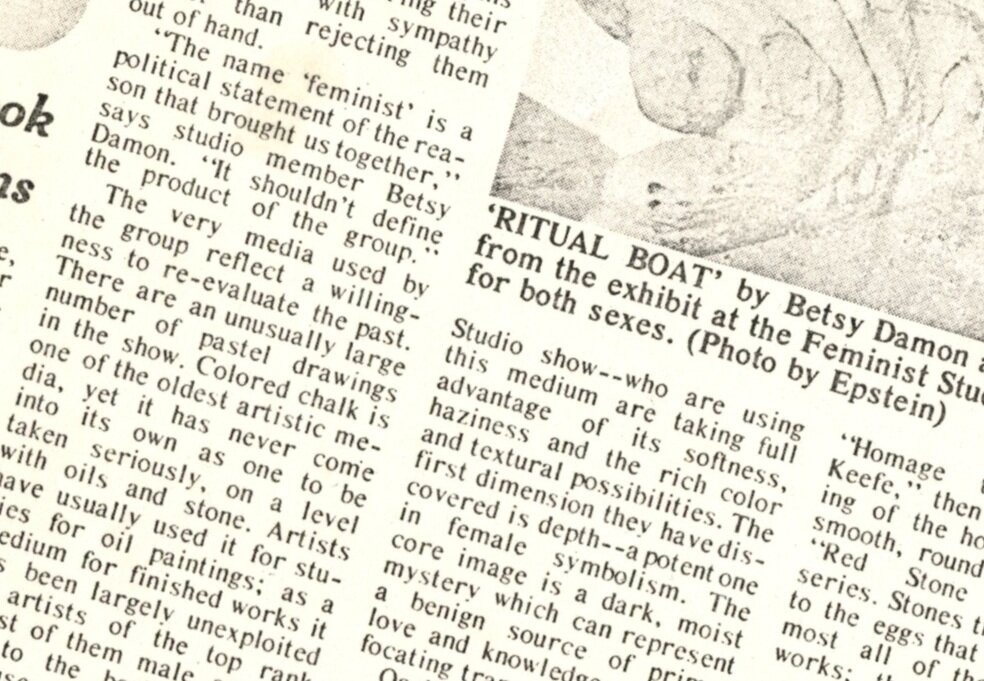
Press
What Ecofeminist Artists Learned from Indigenous Cultures
“Early ecofeminists such as Rahmani, Denes, Damon, and Ana Mendieta—all represented here by photo-documentation of iconic pieces from the late ’70s and early ’80s—incorporated their own bodies into works about the land, creating a formal repertoire on which subsequent generations of artists have drawn.”
Holland Cotter masks up on the Lower East Side and SoHo; Jillian Steinhauer discovers eco-feminist art taking root in Chelsea.
by Louis Bury, Art in America
Designed to facilitate such cross-era and cross-genre comparisons, “ecofeminism(s)” feels a bit like a family reunion—not so small as to be insular, but not so large as to be overwhelming. One great pleasure is seeing lesser-known works situated in kindred context. Bilge Friedlaender’s cluster of nine ochre linen-paper tubes, Cedar Forest (1989), for example, chimes with Damon’s textured cast of a dry riverbed, The Memory of Clean Water (1985), and encapsulates the exhibition’s mood of gritty tenderness. Helène Aylon, who recently died from COVID-19, was better known than Friedlaender but still under-recognized. Her performance The Earth Ambulance (1982)—in which a group of women used an ambulance to “rescue” soil from Strategic Air Command nuclear military bases, then stowed it in pillowcases (“another kind of sack”) and took it along to peace demonstrations—is an iconic fusion of ecological and geopolitical art.